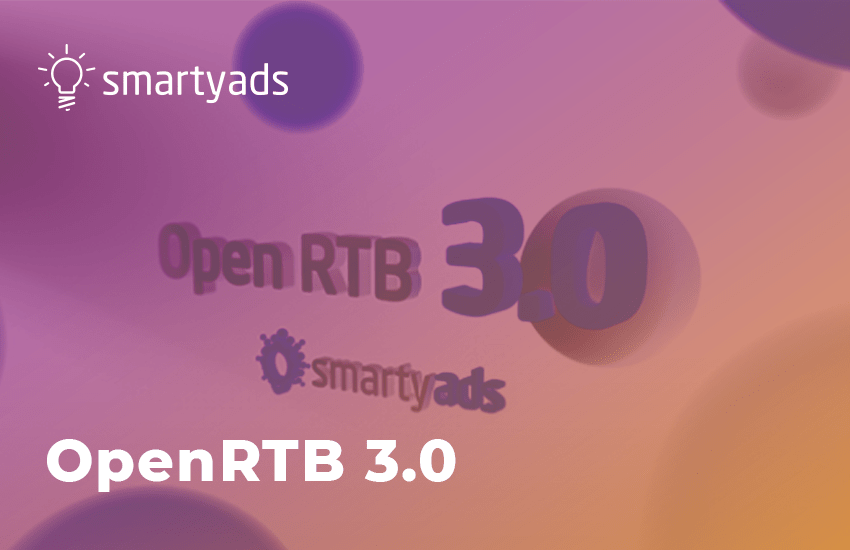SmartyAds’ mission is to make programmatic technology affordable and simple and to deliver the most innovative solutions available in the programmatic ecosystem. This summer, the Interactive Advertising Bureau (IAB) will release the beta version of the OpenRTB 3.0 protocol — and we can’t wait to implement it.
The Evolution of OpenRTB
In 2010, International Advertising Bureau, together with three demand-side platforms (MediaMath, DataXu, Turn) and three supply-side platforms (PubMatic, The Rubicon Project, Admeld), launched a pilot project to standardize the communication among parties exchanging block lists. The project was a success and received positive feedback from industry players, who quickly demanded an API specification to support mobile advertising as well. After the release of OpenRTB Mobile 1.0, a video subcommittee was formed to incorporate support for display, video, and mobile in a single document. The work of this subcommittee led to the release of the unified standard for OpenRTB 2.0 in 2012.
Since then, the IAB tech lab and programmatic communities have been regularly updating the real-time bidding (RTB) technology standards and releasing new versions of the protocol: Version 2.1 in October 2012, Version 2.2 in April 2014, Version 2.3.1 in 2014, Version 2.4 in 2016, and the latest, Version 2.5, in December 2016.
The Benefits of OpenRTB 3.0
The programmatic ecosystem is too fragmented. Hundreds of new demand-side platforms (DSPs), supply-side platforms (SSPs), private and open ad exchanges and white-label ad platforms spring up every month. OpenRTB 3.0 is about buying inventory holistically rather than separately, so we might expect simplification of the digital media landscape and stricter standardization.
OpenRTB Version 3.0 addresses advertising security issues, such as impression fraud, domain spoofing, and bot traffic. The framework of RTB 3.0 requires every supply partner to provide an authenticated signature (encrypted ID) to every impression. This ensures more transparency because buyers will be able to check the origin of every impression.
RTB 2.0 cannot handle the overload of today’s supply chain and cannot serve header bidding effectively. Integrating header bidding technology and adding too many demand partners might add complexity and significantly affect latency. The newest RTB 3.0 addresses issues with header bidding and provides effective solutions to make bids run faster and reduce the load on servers.
Since OpenRTB 2.0, we saw the rise of format-specific companies, such as mobile SSPs, video DSPs, ad networks for specific audience segment and others. It is expected, that programmatic 3.0 will ease the transition to digital advertising, clearing space for connected TVs, smart and wearable devices, and even cars.
Advertisers expect to reach consumers omnichannel and across all screens from a single platform. RTB 3.0 implements the universal User Identifier Technology (UID), which helps to connect a user across platforms and channels. If the marketer and the publisher have the same data management architecture, they could match their users’ IDs without intermediaries and trade directly, saving up on third-party data costs.
SmartyAds keeps its finger on the pulse, getting regular updates on the OpenRTB 3.0 protocol launch. IAB pledged to release the beta version this summer — and SmartyAds will be the first to deliver the new programmatic technology to its clients.




